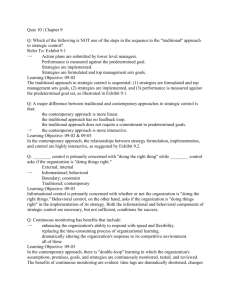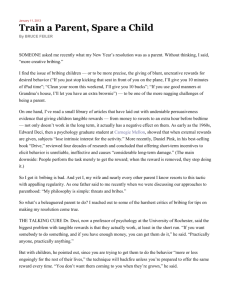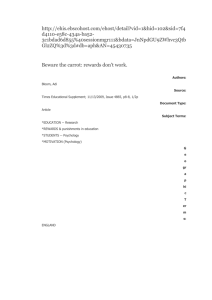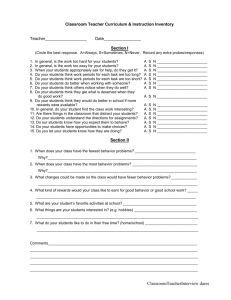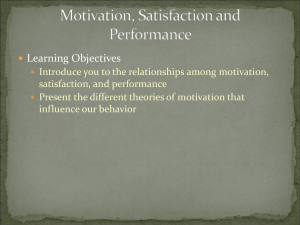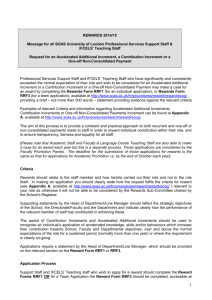Managing Impulsive Behavior: Guidelines and
advertisement
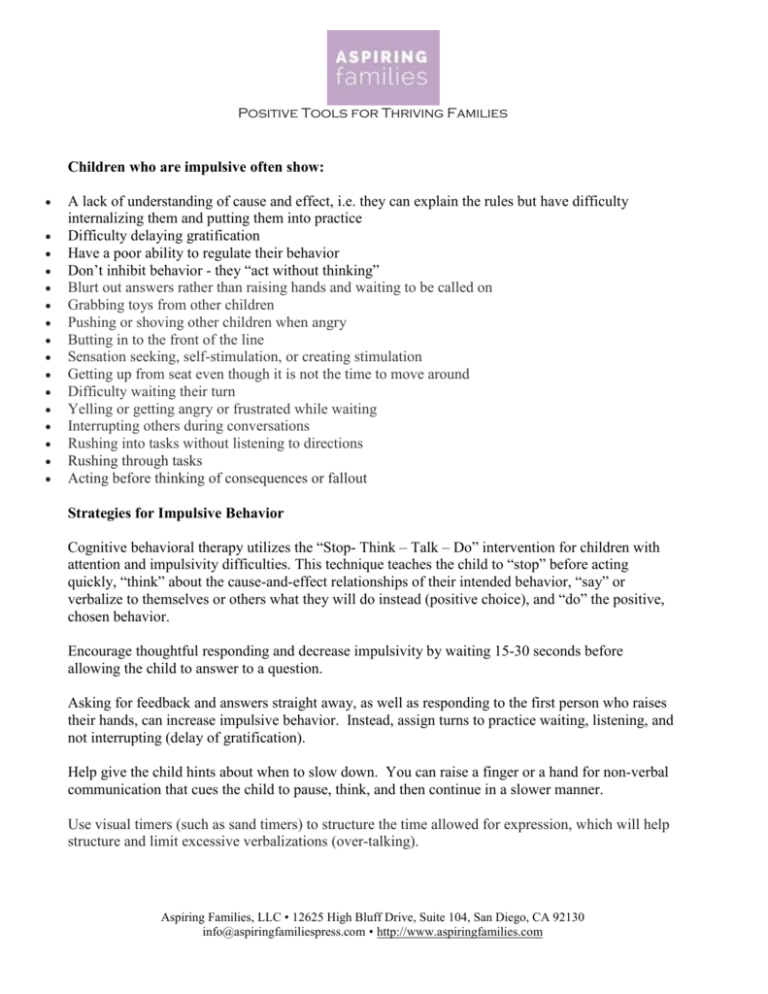
Positive Tools for Thriving Families Children who are impulsive often show: A lack of understanding of cause and effect, i.e. they can explain the rules but have difficulty internalizing them and putting them into practice Difficulty delaying gratification Have a poor ability to regulate their behavior Don’t inhibit behavior - they “act without thinking” Blurt out answers rather than raising hands and waiting to be called on Grabbing toys from other children Pushing or shoving other children when angry Butting in to the front of the line Sensation seeking, self-stimulation, or creating stimulation Getting up from seat even though it is not the time to move around Difficulty waiting their turn Yelling or getting angry or frustrated while waiting Interrupting others during conversations Rushing into tasks without listening to directions Rushing through tasks Acting before thinking of consequences or fallout Strategies for Impulsive Behavior Cognitive behavioral therapy utilizes the “Stop- Think – Talk – Do” intervention for children with attention and impulsivity difficulties. This technique teaches the child to “stop” before acting quickly, “think” about the cause-and-effect relationships of their intended behavior, “say” or verbalize to themselves or others what they will do instead (positive choice), and “do” the positive, chosen behavior. Encourage thoughtful responding and decrease impulsivity by waiting 15-30 seconds before allowing the child to answer to a question. Asking for feedback and answers straight away, as well as responding to the first person who raises their hands, can increase impulsive behavior. Instead, assign turns to practice waiting, listening, and not interrupting (delay of gratification). Help give the child hints about when to slow down. You can raise a finger or a hand for non-verbal communication that cues the child to pause, think, and then continue in a slower manner. Use visual timers (such as sand timers) to structure the time allowed for expression, which will help structure and limit excessive verbalizations (over-talking). Aspiring Families, LLC • 12625 High Bluff Drive, Suite 104, San Diego, CA 92130 info@aspiringfamiliespress.com • http://www.aspiringfamilies.com Set a specific and appropriate time for tasks – verbal or non-verbal. The child should use approximately the amount of time assigned – not over nor under. This teaches the child to pace him/herself, and not rush through a task nor go over the time assigned. Consequences and reinforcement should be used as soon as possible after a given behavior so the child can easily connect the reward or punishment with the behavior. They may also benefit from a demonstration of more appropriate behavior. Consistent consequences and rewards need to be delivered when the child’s behavior is inappropriate or appropriate. For young children, the rewards need to be immediate. For slightly older children, the rewards can be at the end of the day. For more mature children, the rewards can be given at the end of the week. It is important to pair/associate verbal praise at the time of the positive behavior with a reward. This will facilitate “weaning” from a concrete reward structure to an internalized system. Children will benefit from an individualized behavioral approach, where the target behaviors are specifically identified, and rewards and consequences are clearly outlined and paired with each behavior. Create a very specific daily point chart of the five most disruptive impulsive behaviors and target them with points and/or specific rewards and consequences. Create an “Impulsivity Behavioral Chart” (see examples below). To reiterate, delayed feedback or inconsistent, variable feedback is problematic, in that the student may have difficulty in connecting the behavior to the delayed feedback and inconsistent reward/consequence. Rewards, praises, and points should be given on a regular, daily basis and are likely to help change the targeted behaviors. Students are the best source of identifying their own rewards. Instead of confronting the student continually on behaviors that are inappropriate, point out the alternative choices that are available. This will make the expectations clearer to them and avoid the negativity inherent in what they would perceive as criticism. Example of a Daily Targeted Impulsivity Behavioral Chart: Interrupted vs. waited patiently. Left seat vs. stayed in seat for duration assigned. Spoke out of turn vs. listened calmly and quietly. Blurted answer vs. waited for his/her turn patiently. Excessive verbalization beyond timer vs. verbalized answer within time assigned. Aspiring Families, LLC • 12625 High Bluff Drive, Suite 104, San Diego, CA 92130 info@aspiringfamiliespress.com • http://www.aspiringfamilies.com Rushed through task vs. completed task in the approximate time assigned. Did not follow directions vs. followed directions. Could not wait patiently and became frustrated/angry vs. stayed calm and quiet during the wait. Pushing/Shoving/Grabbing vs. kept hands to oneself. Disrupted/distracted another student vs. allowed others to work quietly and productively. Did not complete task vs. completed task fully with all the required details. Example of a Daily Targeted Disrespectful Behavioral Chart Using a rude tone vs. a polite tone (based on feedback by listener). Arguing vs. Agreeing. Not following directions after instructions and one warning vs. following directions immediately or after one warning. Breaking a rule vs. following rules. Insulting and back-talking vs. polite responses and listening quietly. Cursing. Walking away from other vs. listening appropriately. For each item listed above assign a point system, a reward, and a consequence. Keep track of each behavior on the chart on a daily basis. Based on the age of the child, execute the point, reward, or consequence for each item in a timely and consistent manner. *Hitting, pushing, shoving, throwing things, yelling, lying, stealing, etc. are considered ‘significant’ and should have a zero tolerance policy with a meaningful consequence. Conversely, children can be meaningfully rewarded for each hour/day/week they do not engage in any of the above behaviors. Aspiring Families, LLC • 12625 High Bluff Drive, Suite 104, San Diego, CA 92130 info@aspiringfamiliespress.com • http://www.aspiringfamilies.com

